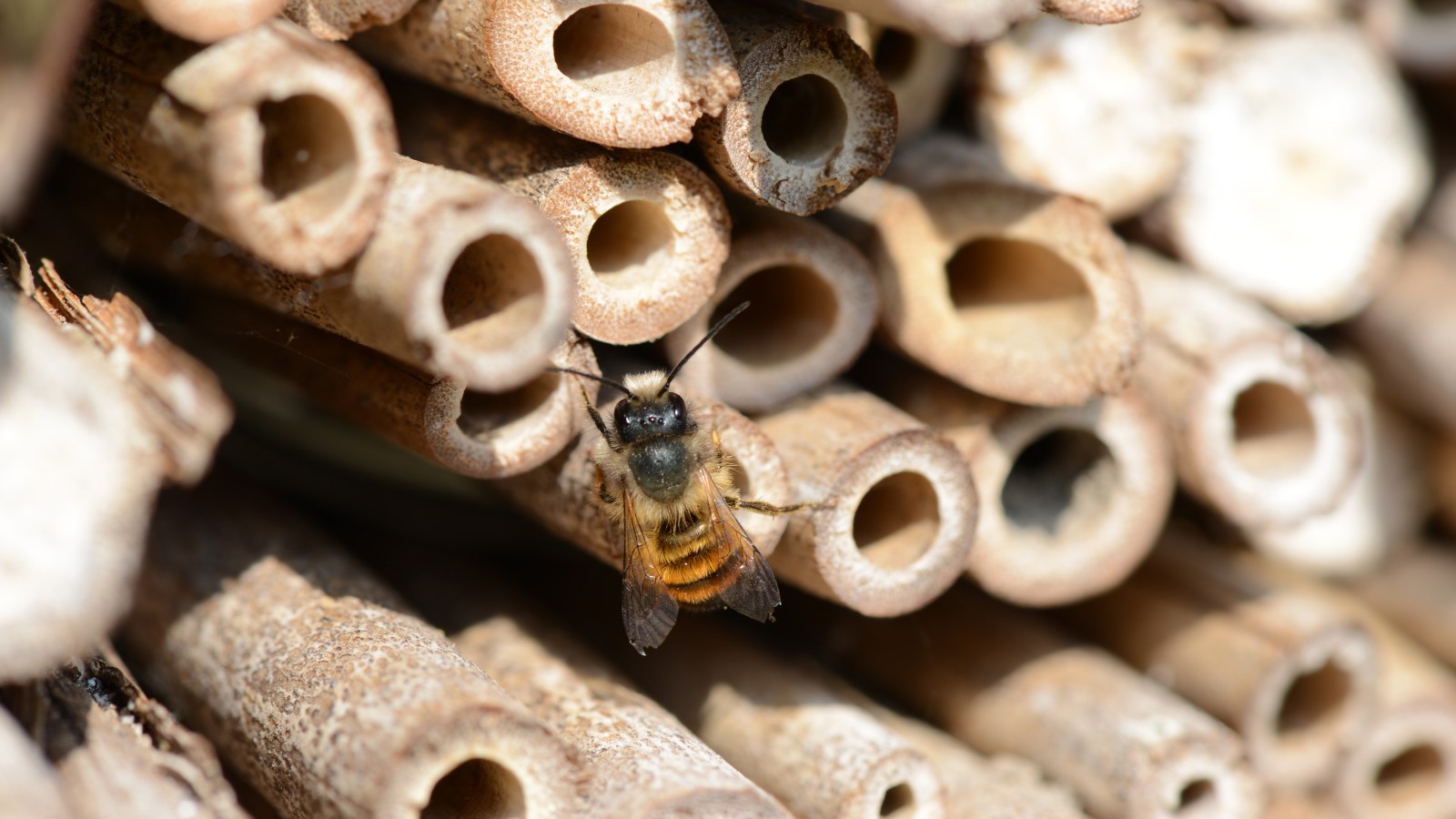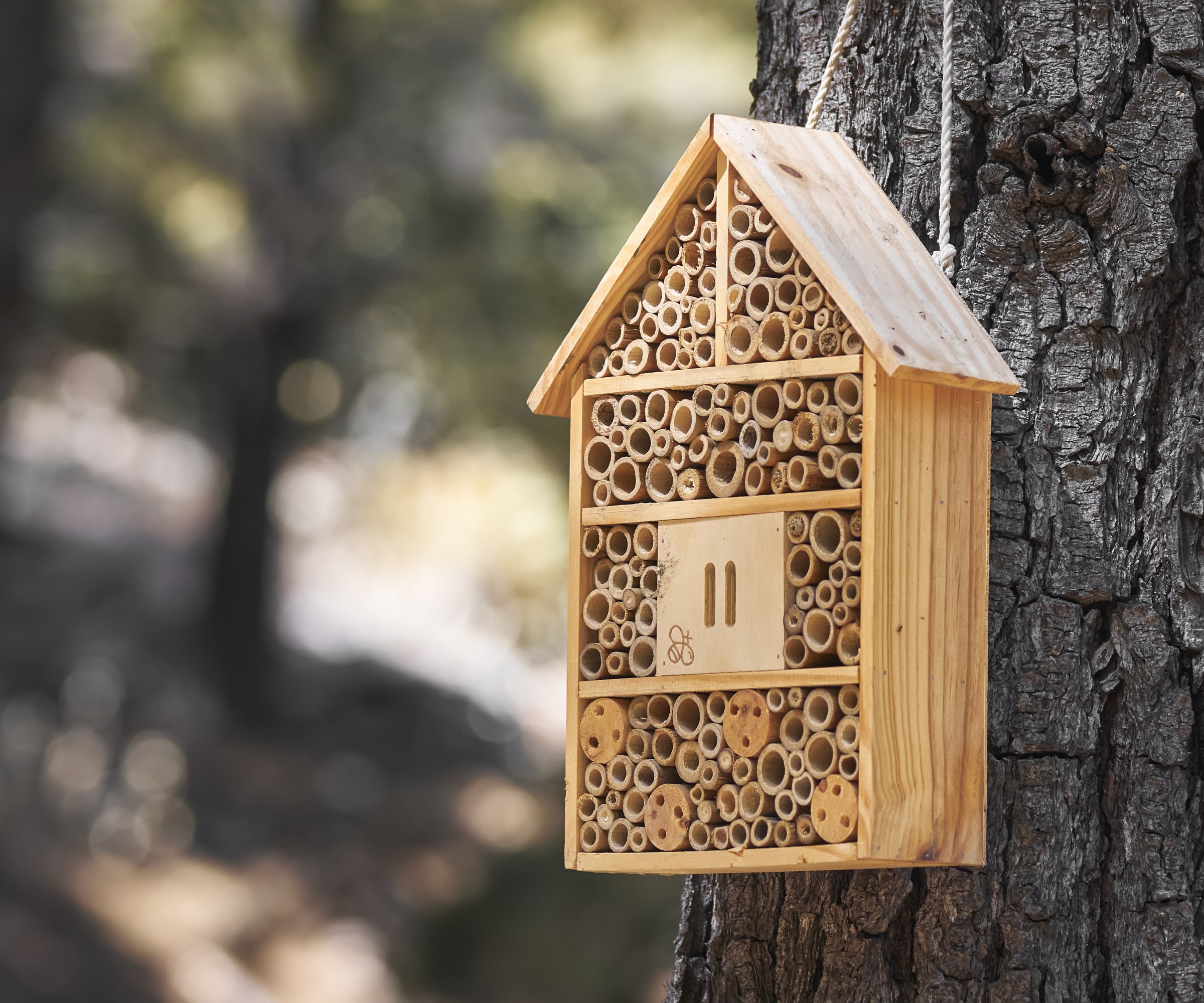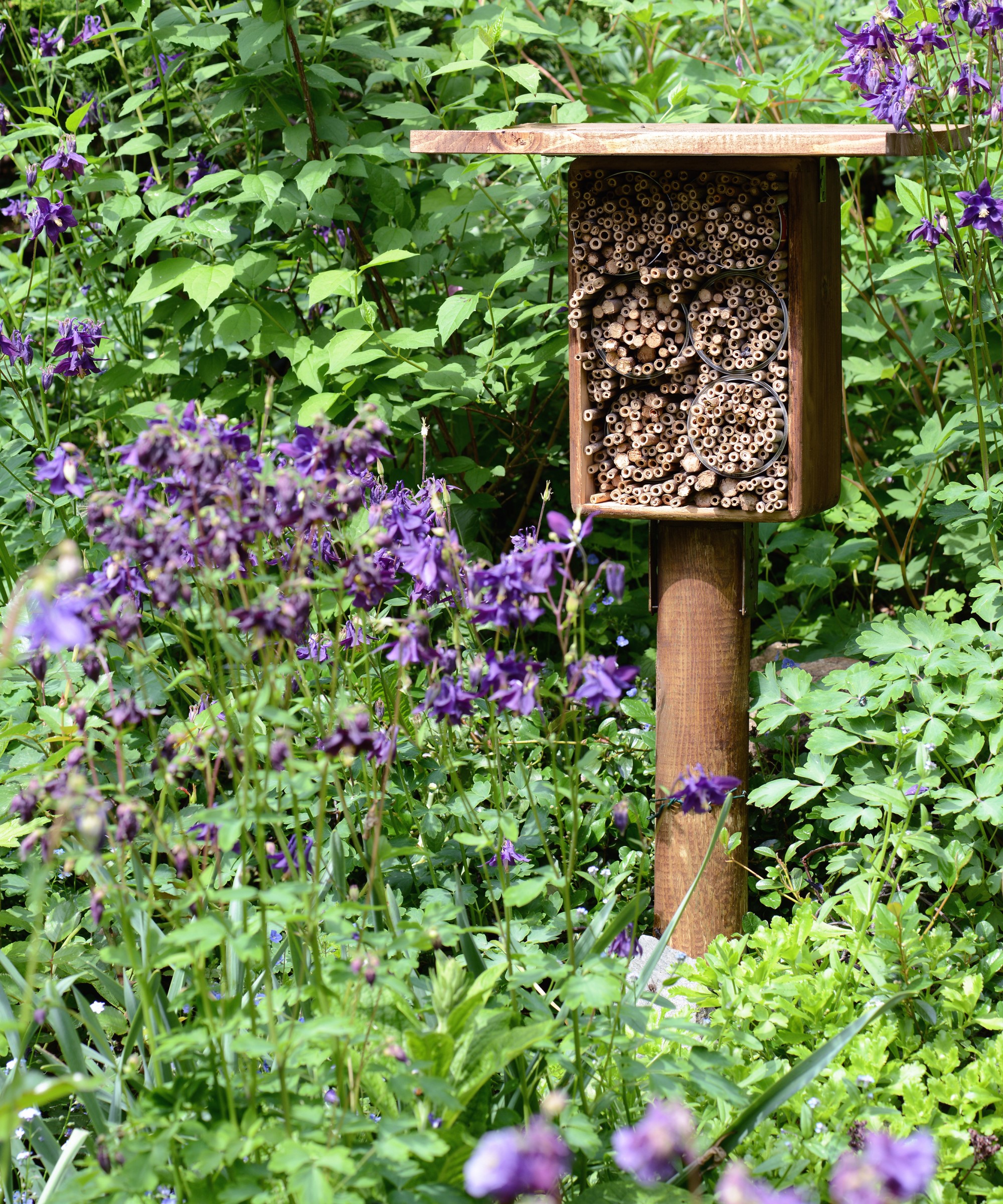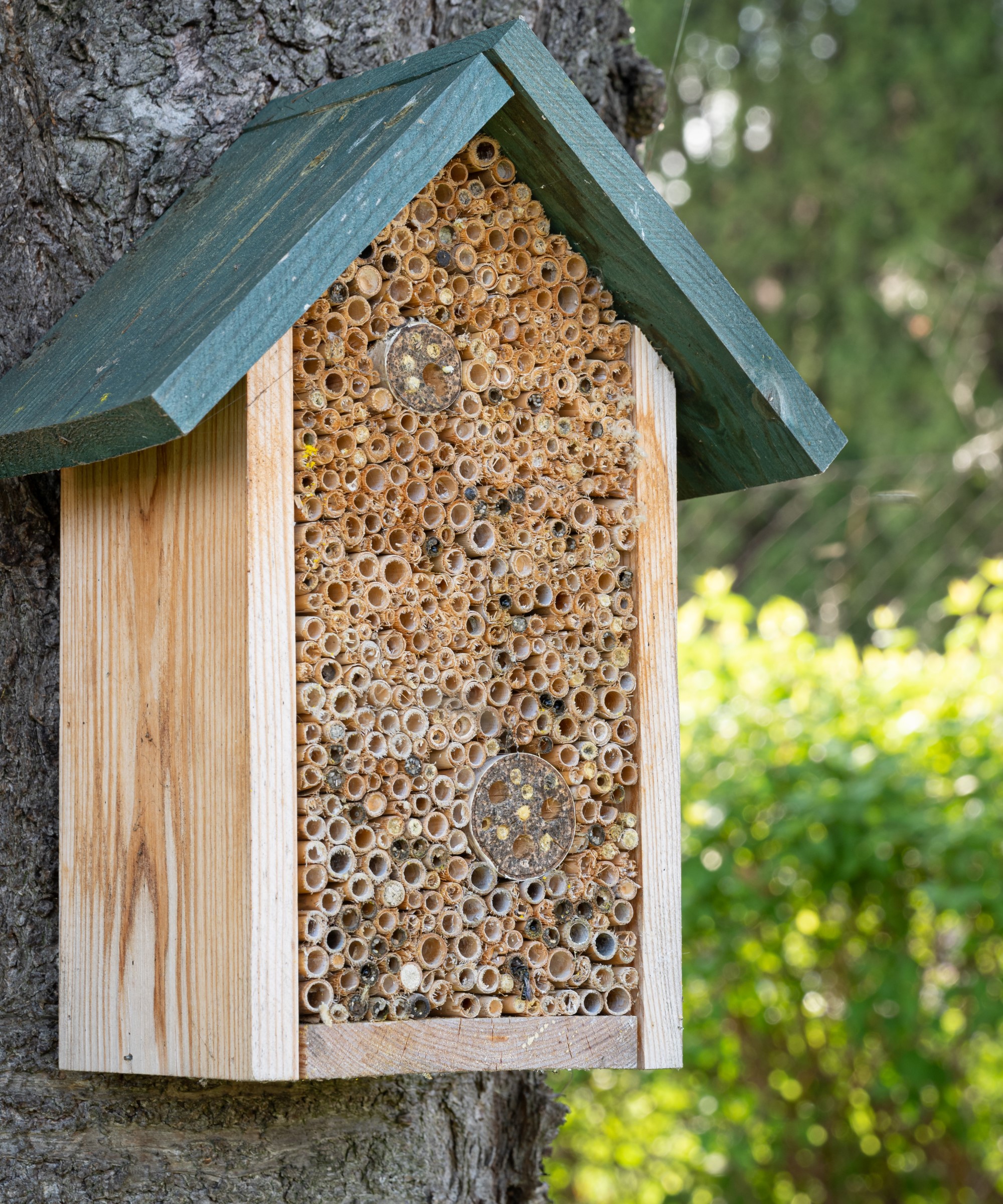
A bee hotel is a great way of providing shelter and even breeding spaces for beneficial insects. You want to make sure you are putting the bee hotel in the ideal spot, so getting the position and aspect right is crucial to where to place a bee hotel.
It will be solitary bees that make up the residents of your bee hotel, they do not live in hives like honeybees. A bee hotel that provides a protected and sunny spot surrounded by food sources and lots of flowers that attract bees will be highly sought after by potential inhabitants.
The best time to put up a bee hotel is in spring, when the bees are starting to be active, and it should be against a solid structure, raised off the ground to provide protection. Put a bee hotel in the right spot and you can attract lots of these beneficial insects into your garden to help pollinate your flowers, fruit, and vegetables.

Positioning your bee hotel
A bee hotel wants to be placed against a flat or sturdy surface and firmly secured, ensuring it will not rock in the wind. Good potential places for where to place a bee hotel include against the side of a shed, garage, fence, a post, or even a large, mature tree. Ensure that there is no vegetation that will block the entrance to the bee hotel.
Allison Vallin Kostovick, garden author and creator of Finch and Folly, advises that solitary bees will be attracted to a bee hotel that ‘offers shelter from the wind and elements’ in a warm and sunny spot. When talking about the best position for a bee hotel, she adds: ‘You want to make sure to mount your hotel 3-5 feet off the ground to protect it from predators.’
As well as protecting from predators or scavengers, raising the bee hotel will prevent it from succumbing to flooding in extreme weather situations. If you have a bee hotel that features an overhang as part of its design, that too will help protect the bees from wind and rain.
You want to position the bee hotel near bee-friendly flowers, ideally you will have a good food source within 300 feet of the location of the bee hotel. Using a diverse range of plants for pollinators, with different shapes and colors of blooms and integrating wildflowers, is one of the best ways to attract bees to a garden.
Hilary Kearney, owner of Girl Next Door Honey, says that solitary bees that occupy bee hotels ‘don’t travel very far to forage for flowers’ like honey bees that travel miles from their hive, so putting a bounty of food near to the bee hotel is vital. She also recommends establishing native flowers in your yard, as many solitary bees rely on certain native species and may not visit non-native flowers.
On picking a location for a bee hotel, she says that people need not worry about the risks of putting one near the home, adding: ‘Bee hotels can be anywhere in your garden since the solitary bees that occupy them don’t usually sting.’

Best aspect for your bee hotel
The best spot for placing a bee hotel would be a sunny spot in your backyard, as bees like the warmth inside their home. A spot that faces south or south-east would provide the right amount of sunlight the bees want.
However, David M Burrows, the managing director at non-profit Arkearth, which runs sustainable projects to help save honeybees and other pollinating species, advises that an ideal spot would be one that provides morning sun for the bees.
He recommends: ‘Place [the bee hotel] in a partially shady area of your yard. Morning sun is the best as it wakes and warms their home so they can begin foraging. Afternoon shade provides relief from hot summer days.‘

When should I put up a bee hotel?
The best time to place a bee hotel out in the backyard as part of any wildlife garden ideas is in spring, from March onwards. Bees tend to start becoming active once the weather reaches a consistent temperature of between 55˚F and 60˚F and those sunny spring days are the time that potential new inhabitants for any bee hotel are on the lookout for somewhere to reside.
You can purchase bee hotels from stores or online, or make your own at home using bamboo canes, reeds, and old plant stems to create nesting tubes to house in a wooden box.
Overwintering a bee hotel
If your bee hotel is securely attached to a building, structure, or tree, and located where it can be sheltered from rain and freezing temperatures then you can leave the bee hotel outside over winter. However, if the bee hotel risks succumbing to the elements then you can take it down every fall, from the end of October onwards, and store it away for winter. Rain and dampness is more troublesome for the larvae inside the hotel than the cold.
Choose a cool and dry spot, such as a garage or shed, and not somewhere that is centrally heated or liable to excessive heat, such as a greenhouse. Store it high off the ground and beware of pests, such as spiders, that could be attracted to the nectar and baby bees in the overwintering bee hotel. And remember to put the bee hotel back out again come spring.
Putting up a bee hotel is a great way to attract and support more beneficial insects into your garden. Including a bee hotel along with other wildlife-friendly elements, such as a bug hotel or bee watering station, can help your garden teem with insects.
Taking steps towards making your space a garden for pollinators will not only help you get more blooms and better crops, but those beneficial insects will also help combat pests in the garden.







